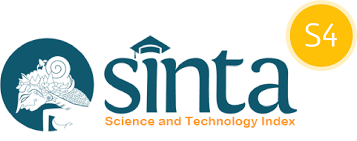Classification of Heart Diseases Based on Machine Learning: A Review
DOI:
https://doi.org/10.34010/injiiscom.v6i1.13600Keywords:
Machine learning algorithms, heart disease classification, cardiovascular diseaseAbstract
The article emphasizes the critical need for early and accurate diagnosis of cardiovascular disease (CVD), a leading cause of global mortality. Recent advancements in machine learning (ML) have shown promising results in classifying cardiac disorders, aiming to enhance healthcare practices. It discusses both the benefits and limitations of current ML algorithms used in this field, highlighting their role in improving the management of cardiac diseases through accurate diagnosis. The study evaluates various supervised learning techniques like support vector machines, decision trees, and neural networks, illustrating their effectiveness in handling diverse datasets and identifying significant patterns. Furthermore, it explores unsupervised learning methods such as clustering algorithms, which uncover hidden patterns in cardiac data. The research also investigates the potential of ensemble approaches and deep learning to further enhance classification accuracy. In conclusion, the study provides an overview of the current state of ML-based heart disease classification research, aiming to inform policymakers, physicians, and researchers about the transformative potential of ML in advancing heart disease diagnosis and treatment, ultimately aiming for improved patient outcomes and reduced healthcare costs.
References
Abdar, M., Książek, W., Acharya, U. R., Tan, R.-S., Makarenkov, V., & Pławiak, P. (2019). A new machine learning technique for an accurate diagnosis of coronary artery disease. Computer Methods and Programs in Biomedicine, 179, 104992.
Abdullah, D. M., & Abdulazeez, A. M. (2021). Machine learning applications based on SVM classification a review. Qubahan Academic Journal, 1(2), 81-90.
Acharya, U. R., Oh, S. L., Hagiwara, Y., Tan, J. H., Adam, M., Gertych, A., & San Tan, R. (2017). A deep convolutional neural network model to classify heartbeats. Computers in Biology and Medicine, 89, 389-396.
Ahsan, M. M., & Siddique, Z. (2022). Machine learning-based heart disease diagnosis: A systematic literature review. Artificial Intelligence in Medicine, 128, 102289.
Ali, M. M., Paul, B. K., Ahmed, K., Bui, F. M., Quinn, J. M., & Moni, M. A. (2021). Heart disease prediction using supervised machine learning algorithms: Performance analysis and comparison. Computers in Biology and Medicine, 136, 104672.
Arooj, S., Rehman, S. u., Imran, A., Almuhaimeed, A., Alzahrani, A. K., & Alzahrani, A. (2022). A Deep Convolutional Neural Network for the Early Detection of Heart Disease. Biomedicines, 10(11), 2796.
Aziz, S., Khan, M. U., Iqtidar, K., Ali, S., Remete, A. N., & Javid, M. A. (2022). Pulse plethysmograph signal analysis method for classification of heart diseases using novel local spectral ternary patterns. Expert Systems, 39(8), e13011.
Bhatt, C. M., Patel, P., Ghetia, T., & Mazzeo, P. L. (2023). Effective heart disease prediction using machine learning techniques. Algorithms, 16(2), 88.
Bhavekar, G. S., & Goswami, A. D. (2022). A hybrid model for heart disease prediction using recurrent neural network and long short term memory. International Journal of Information Technology, 14(4), 1781-1789.
Celebi, M. E., & Aydin, K. (2016). Unsupervised learning algorithms (Vol. 9). Springer.
Choi, E., Schuetz, A., Stewart, W. F., & Sun, J. (2017). Using recurrent neural network models for early detection of heart failure onset. Journal of the American Medical Informatics Association, 24(2), 361-370.
Dileep, P., Rao, K. N., Bodapati, P., Gokuruboyina, S., Peddi, R., Grover, A., & Sheetal, A. (2023). An automatic heart disease prediction using cluster-based bi-directional LSTM (C-BiLSTM) algorithm. Neural Computing and Applications, 35(10), 7253-7266.
Faieq, A. K., & Mijwil, M. M. (2022). Prediction of heart diseases utilising support vector machine and artificial neural network. Indonesian Journal of Electrical Engineering and Computer Science, 26(1), 374-380.
Gawande, N., & Barhatte, A. (2017). Heart diseases classification using convolutional neural network. 2017 2nd international conference on communication and electronics systems (ICCES),
Ghoniem, R. M. (2020). A novel bio-inspired deep learning approach for liver cancer diagnosis. Information, 11(2), 80.
Goodfellow, I., Bengio, Y., & Courville, A. (2016). Deep learning. MIT press.
Hassan, D., Hussein, H. I., & Hassan, M. M. (2023). Heart disease prediction based on pre-trained deep neural networks combined with principal component analysis. Biomedical Signal Processing and Control, 79, 104019.
Hassan, N. S., Abdulazeez, A. M., Saeed, J. N., Zeebaree, D. Q., Al-Zebari, A., & Ahmed, F. Y. (2021). A compassion of three data miming algorithms for heart disease prediction. 2021 IEEE Symposium on Industrial Electronics & Applications (ISIEA),
Ibrahim, I., & Abdulazeez, A. (2021). The role of machine learning algorithms for diagnosing diseases. Journal of Applied Science and Technology Trends, 2(01), 10-19.
Kadhim, M. A., & Radhi, A. M. (2023). Heart disease classification using optimized Machine learning algorithms. Iraqi Journal For Computer Science and Mathematics, 4(2), 31-42.
Kaur, B., & Kaur, G. (2022). Heart disease prediction using modified machine learning algorithm. International Conference on Innovative Computing and Communications: Proceedings of ICICC 2022, Volume 1,
Kavitha, S., & Kaulgud, N. (2023). Quantum K-means clustering method for detecting heart disease using quantum circuit approach. Soft Computing, 27(18), 13255-13268.
Khan, J. S., Kaushik, M., Chaurasia, A., Dutta, M. K., & Burget, R. (2022). Cardi-Net: A deep neural network for classification of cardiac disease using phonocardiogram signal. Computer Methods and Programs in Biomedicine, 219, 106727.
Khan, M. A. (2020). An IoT framework for heart disease prediction based on MDCNN classifier. IEEE access, 8, 34717-34727.
Khourdifi, Y., & Baha, M. (2019). Heart disease prediction and classification using machine learning algorithms optimized by particle swarm optimization and ant colony optimization. International journal of Intelligent engineering & systems, 12(1).
Kumar, R., Reddy, M., & Famita, S. (2023). Heart Disease Prediction Using Ann Based Ensemble Framework (ANNEF) Approach. Available at SSRN 4365350.
Kumar, S., & Singh, M. (2018). Big data analytics for healthcare industry: impact, applications, and tools. Big data mining and analytics, 2(1), 48-57.
Li, F., Tang, H., Shang, S., Mathiak, K., & Cong, F. (2020). Classification of heart sounds using convolutional neural network. Applied Sciences, 10(11), 3956.
Li, J. P., Haq, A. U., Din, S. U., Khan, J., Khan, A., & Saboor, A. (2020). Heart disease identification method using machine learning classification in e-healthcare. IEEE access, 8, 107562-107582.
Li, Y., He, Z., Wang, H., Li, B., Li, F., Gao, Y., & Ye, X. (2020). CraftNet: a deep learning ensemble to diagnose cardiovascular diseases. Biomedical Signal Processing and Control, 62, 102091.
Maglogiannis, I., Loukis, E., Zafiropoulos, E., & Stasis, A. (2009). Support vectors machine-based identification of heart valve diseases using heart sounds. Computer Methods and Programs in Biomedicine, 95(1), 47-61.
Miotto, R., Li, L., & Dudley, J. T. (2016). Deep learning to predict patient future diseases from the electronic health records. Advances in Information Retrieval: 38th European Conference on IR Research, ECIR 2016, Padua, Italy, March 20–23, 2016. Proceedings 38,
Miotto, R., Wang, F., Wang, S., Jiang, X., & Dudley, J. T. (2018). Deep learning for healthcare: review, opportunities and challenges. Briefings in bioinformatics, 19(6), 1236-1246.
Muhammed, S. M., Abdul-Majeed, G., & Mahmoud, M. S. (2023). Prediction of Heart Diseases by Using Supervised Machine Learning Algorithms. Wasit Journal of Pure sciences, 2(1), 231-243.
Muppalaneni, N. B., Ma, M., Gurumoorthy, S., Kannan, R., & Vasanthi, V. (2019). Machine learning algorithms with ROC curve for predicting and diagnosing the heart disease. Soft computing and medical bioinformatics, 63-72.
Nandy, S., Adhikari, M., Balasubramanian, V., Menon, V. G., Li, X., & Zakarya, M. (2023). An intelligent heart disease prediction system based on swarm-artificial neural network. Neural Computing and Applications, 35(20), 14723-14737.
Nanehkaran, Y., Licai, Z., Chen, J., Jamel, A. A., Shengnan, Z., Navaei, Y. D., & Aghbolagh, M. A. (2022). Anomaly detection in heart disease using a density-based unsupervised approach. Wireless Communications and Mobile Computing, 2022.
Nikhar, S., & Karandikar, A. (2016). Prediction of heart disease using machine learning algorithms. International Journal of Advanced Engineering, Management and Science, 2(6), 239484.
Ozcan, M., & Peker, S. (2023). A classification and regression tree algorithm for heart disease modeling and prediction. Healthcare Analytics, 3, 100130.
Rahim, A., Rasheed, Y., Azam, F., Anwar, M. W., Rahim, M. A., & Muzaffar, A. W. (2021). An integrated machine learning framework for effective prediction of cardiovascular diseases. IEEE access, 9, 106575-106588.
Rahman, M. M. (2022). A web-based heart disease prediction system using machine learning algorithms. Network Biology, 12(2), 64.
Rajamhoana, S., Devi, C. A., Umamaheswari, K., Kiruba, R., Karunya, K., & Deepika, R. (2018). Analysis of neural networks based heart disease prediction system. 2018 11th international conference on human system interaction (HSI),
Rashed-Al-Mahfuz, M., Moni, M. A., Lio’, P., Islam, S. M. S., Berkovsky, S., Khushi, M., & Quinn, J. M. (2021). Deep convolutional neural networks based ECG beats classification to diagnose cardiovascular conditions. Biomedical engineering letters, 11, 147-162.
Sen, P. C., Hajra, M., & Ghosh, M. (2020). Supervised classification algorithms in machine learning: A survey and review. Emerging Technology in Modelling and Graphics: Proceedings of IEM Graph 2018,
Sharma, A., Pal, T., & Jaiswal, V. (2022). Heart disease prediction using convolutional neural network. In Cardiovascular and Coronary Artery Imaging (pp. 245-272). Elsevier.
Sharma, N., Malviya, L., Jadhav, A., & Lalwani, P. (2023). A hybrid deep neural net learning model for predicting Coronary Heart Disease using Randomized Search Cross-Validation Optimization. Decision Analytics Journal, 9, 100331.
Shickel, B., Tighe, P. J., Bihorac, A., & Rashidi, P. (2017). Deep EHR: a survey of recent advances in deep learning techniques for electronic health record (EHR) analysis. IEEE journal of biomedical and health informatics, 22(5), 1589-1604.
Shin, H.-C., Roth, H. R., Gao, M., Lu, L., Xu, Z., Nogues, I., . . . Summers, R. M. (2016). Deep convolutional neural networks for computer-aided detection: CNN architectures, dataset characteristics and transfer learning. IEEE transactions on medical imaging, 35(5), 1285-1298.
Sun, W., Zhang, P., Wang, Z., & Li, D. (2021). Prediction of cardiovascular diseases based on machine learning. ASP Transactions on Internet of Things, 1(1), 30-35.
Sureja, N., Chawda, B., & Vasant, A. (2022). A novel salp swarm clustering algorithm for prediction of the heart diseases. Indonesian Journal of Electrical Engineering and Computer Science, 25(1), 265-272.
Taylan, O., Alkabaa, A. S., Alqabbaa, H. S., Pamukçu, E., & Leiva, V. (2023). Early prediction in classification of cardiovascular diseases with machine learning, neuro-fuzzy and statistical methods. Biology, 12(1), 117.
Tjahjadi, H., & Ramli, K. (2020). Noninvasive blood pressure classification based on photoplethysmography using k-nearest neighbors algorithm: a feasibility study. Information, 11(2), 93.
Wang, G., Li, W., Zuluaga, M. A., Pratt, R., Patel, P. A., Aertsen, M., . . . Ourselin, S. (2018). Interactive medical image segmentation using deep learning with image-specific fine tuning. IEEE transactions on medical imaging, 37(7), 1562-1573.
Wang, H., & Raj, B. (2017). On the origin of deep learning. arXiv preprint arXiv:1702.07800.
Wang, H., Shi, H., Chen, X., Zhao, L., Huang, Y., & Liu, C. (2020). An improved convolutional neural network based approach for automated heartbeat classification. Journal of medical systems, 44, 1-9.
Yilmaz, R., & YAĞIN, F. H. (2022). Early detection of coronary heart disease based on machine learning methods. Medical Records, 4(1), 1-6.
Zhang, J., Kowsari, K., Harrison, J. H., Lobo, J. M., & Barnes, L. E. (2018). Patient2vec: A personalized interpretable deep representation of the longitudinal electronic health record. IEEE access, 6, 65333-65346.

















